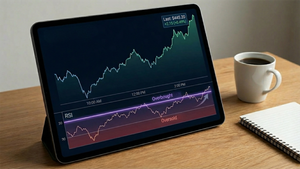—What goes up, must eventually moderate, says Chief Economist Mark Fleming—
First American Financial Corporation (NYSE: FAF), a leading global provider of title insurance, settlement services and risk solutions for real estate transactions, today released the December 2021 First American Real House Price Index (RHPI). The RHPI measures the price changes of single-family properties throughout the U.S. adjusted for the impact of income and interest rate changes on consumer house-buying power over time at national, state and metropolitan area levels. Because the RHPI adjusts for house-buying power, it also serves as a measure of housing affordability.
Chief Economist Analysis: Real House Prices Up 21.7 Percent Year Over Year
“In December 2021, the Real House Price Index (RHPI) increased 21.7 percent compared with December 2020, the highest annual growth rate since 2014. The record increase was driven by rising mortgage rates and rapid nominal house price appreciation, which make up two of the three drivers of the RHPI,” said Mark Fleming, chief economist at First American. “The 30-year, fixed-rate mortgage and the unadjusted house price index increased by 0.4 percentage points and 21.4 percent respectively.
“Even though household income increased 5 percent since December 2020 and boosted consumer house-buying power, it was not enough to offset the impact of higher mortgage rates and rising nominal prices on affordability,” said Fleming. “In the near term, affordability is likely to wane further, as mortgage rates are expected to continue to rise and the pace of house price appreciation exceeds gains in household income. How buyers and sellers react to higher rates may help the housing market regain some balance.”
Existing Homeowners Locked In?
“When mortgage rates fall, a potential home buyer can buy the same amount of home for a lower monthly payment or buy more home for the same monthly payment. The 40-year tailwind of declining mortgage rates has allowed homeowners to buy a home at one mortgage rate and then later sell and move into a more expensive home when rates are lower,” said Fleming. “This long-run decline in mortgage rates has encouraged existing homeowners to move out and move up.
“Faster house price appreciation, modestly rising mortgage rates and record low levels of homes for sale have been the economic dynamics dominating the housing market during the second half 2021. While existing homeowners have historically high levels of equity and may feel wealthier because of it, many have also secured historically low fixed-rate mortgages,” said Fleming. “There is a financial ‘lock-in’ effect that increases as mortgage rates rise and as the size of a mortgage increases. Rising mortgage rates increase the monthly cost of borrowing the same amount that a homeowner owes on their existing mortgage. The higher the prevailing market mortgage rate is relative to the homeowner’s existing mortgage rate, the stronger the lock-in effect. Why move out and move down?
“Additionally, the record low level of houses for sale makes it difficult to find a better, more attractive house to buy, so sellers – who are also prospective buyers – don’t sell for fear of not finding something to buy,” said Fleming. “The good news is that builders have been breaking ground on more new homes, which may alleviate some of the supply crunch and encourage existing buyers to move.
“Nonetheless, buying a home is often prompted by lifestyle decisions more so than financial considerations,” said Fleming. “Despite the financial lock-in, homeowners will still make the decision to move based on lifestyle changes, such as needing more space to accommodate a growing family or relocating for a new job or other reason.”
The Housing Market Will Adjust
“Homeowners may feel rate-locked into their homes, but first-time home buyers have no such financial lock. Yet, first-time home buyers must also contend with the record low supply of homes in a declining affordability environment. But what goes up, must eventually moderate,” said Fleming. “Rising rates may be a housing market headwind in 2022, but as some buyers pull back from the market due to affordability and supply constraints and as new construction adds more supply, house prices will moderate, resulting in a more balanced housing market.”
December 2021 Real House Price Index Highlights
- Real house prices increased 1.9 percent between November 2021 and December 2021.
- Real house prices increased 21.7 percent between December 2020 and December 2021.
- Consumer house-buying power, how much one can buy based on changes in income and interest rates, increased 0.04 percent between November 2021 and December 2021, and decreased 0.2 percent year over year.
- Median household income has increased 5.2 percent since December 2020 and 69.3 percent since January 2000.
- Real house prices are 4.8 percent less expensive than in January 2000.
- While unadjusted house prices are now 44.5 percent above the housing boom peak in 2006, real, house-buying power-adjusted house prices remain 33.2 percent below their 2006 housing boom peak.
December 2021 Real House Price State Highlights
- The five states with the greatest year-over-year increase in the RHPI are: Arizona (+34.3 percent), Florida (+32.0), South Carolina (+29.4 percent), Connecticut (+28.6 percent), and Georgia (+28.4),
- There were no states with a year-over-year decrease in the RHPI.
December 2021 Real House Price Local Market Highlights
- Among the Core Based Statistical Areas (CBSAs) tracked by First American, the five markets with the greatest year-over-year increase in the RHPI are: Phoenix (+36.3 percent), Charlotte, N.C. (+36.0), Tampa, Fla. (+32.9 percent), Raleigh, N.C. (+31.5 percent), and Atlanta (+31.5 percent).
- Among the Core Based Statistical Areas (CBSAs) tracked by First American, there were no markets with a year-over-year decrease in the RHPI.
Next Release
The next release of the First American Real House Price Index will take place the week of March 28, 2022 for January 2022 data.
Sources
Methodology
The methodology statement for the First American Real House Price Index is available at http://www.firstam.com/economics/real-house-price-index.
Disclaimer
Opinions, estimates, forecasts and other views contained in this page are those of First American’s Chief Economist, do not necessarily represent the views of First American or its management, should not be construed as indicating First American’s business prospects or expected results, and are subject to change without notice. Although the First American Economics team attempts to provide reliable, useful information, it does not guarantee that the information is accurate, current or suitable for any particular purpose. © 2022 by First American. Information from this page may be used with proper attribution.
About First American
First American Financial Corporation (NYSE: FAF) is a leading provider of title insurance, settlement services and risk solutions for real estate transactions that traces its heritage back to 1889. First American also provides title plant management services; title and other real property records and images; valuation products and services; home warranty products; banking, trust and wealth management services; and other related products and services. With total revenue of $9.2 billion in 2021, the company offers its products and services directly and through its agents throughout the United States and abroad. In 2021, First American was named to the Fortune 100 Best Companies to Work For® list for the sixth consecutive year. More information about the company can be found at www.firstam.com.
View source version on businesswire.com: https://www.businesswire.com/news/home/20220223005525/en/
Contacts
Media Contact:
Marcus Ginnaty
Corporate Communications
First American Financial Corporation
(714) 250-3298
Investor Contact:
Craig Barberio
Investor Relations
First American Financial Corporation
(714) 250-5214




